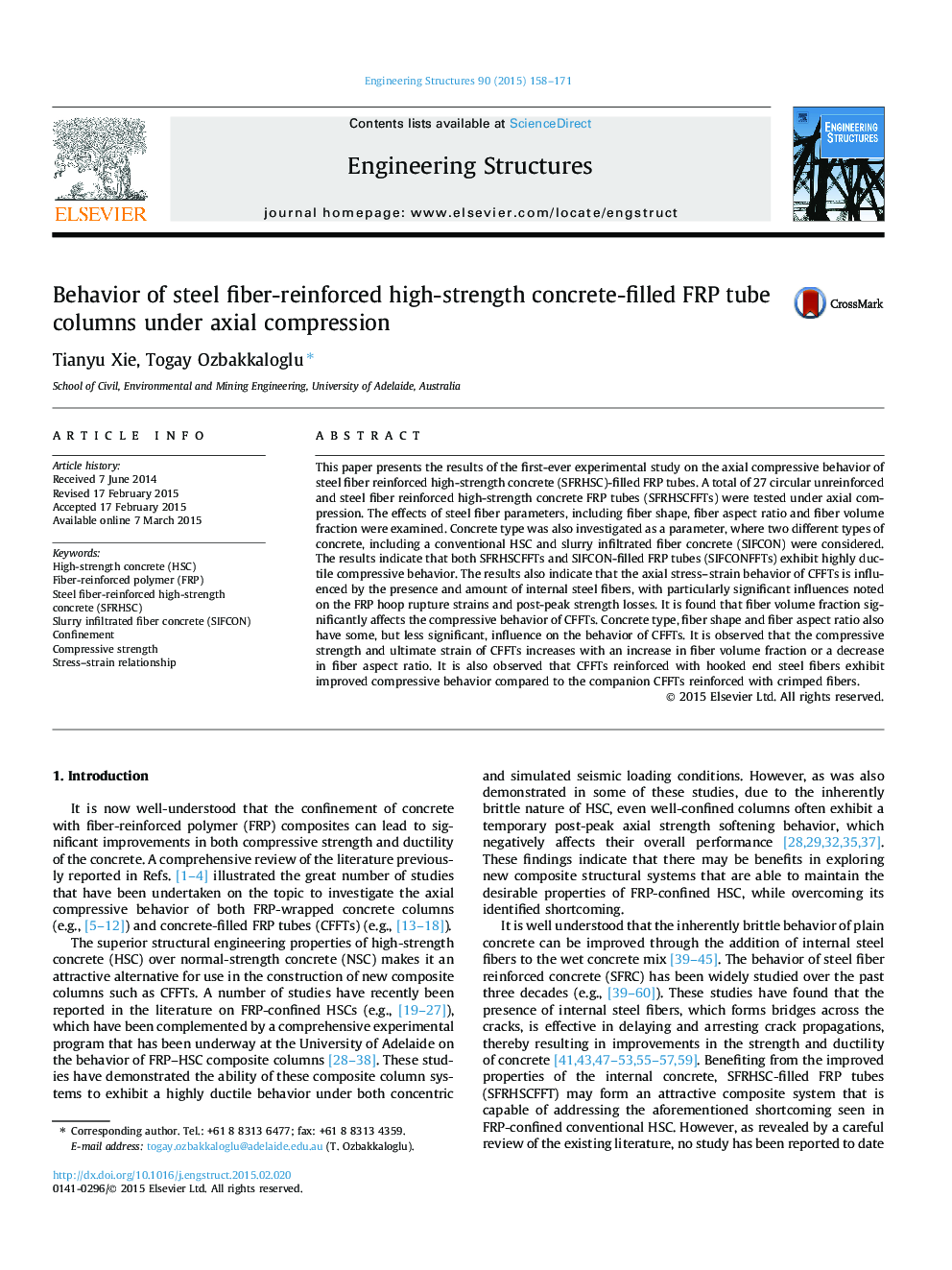| Article ID | Journal | Published Year | Pages | File Type |
|---|---|---|---|---|
| 266255 | Engineering Structures | 2015 | 14 Pages |
•27 HSCFFTs with and without inner steel fibers are tested under axial compression.•Effects of concrete and steel fiber properties (i.e., shape, aspect ratio and volume fraction) are investigated.•Ultimate conditions and stress–strain relationships of the specimens are presented.•Post-peak strength losses typically observed in HSCFFTs can be eliminated through use of steel fibers.•Presence of internal steel fibers results in an increase in FRP hoop rupture strains of HSCFFTs.
This paper presents the results of the first-ever experimental study on the axial compressive behavior of steel fiber reinforced high-strength concrete (SFRHSC)-filled FRP tubes. A total of 27 circular unreinforced and steel fiber reinforced high-strength concrete FRP tubes (SFRHSCFFTs) were tested under axial compression. The effects of steel fiber parameters, including fiber shape, fiber aspect ratio and fiber volume fraction were examined. Concrete type was also investigated as a parameter, where two different types of concrete, including a conventional HSC and slurry infiltrated fiber concrete (SIFCON) were considered. The results indicate that both SFRHSCFFTs and SIFCON-filled FRP tubes (SIFCONFFTs) exhibit highly ductile compressive behavior. The results also indicate that the axial stress–strain behavior of CFFTs is influenced by the presence and amount of internal steel fibers, with particularly significant influences noted on the FRP hoop rupture strains and post-peak strength losses. It is found that fiber volume fraction significantly affects the compressive behavior of CFFTs. Concrete type, fiber shape and fiber aspect ratio also have some, but less significant, influence on the behavior of CFFTs. It is observed that the compressive strength and ultimate strain of CFFTs increases with an increase in fiber volume fraction or a decrease in fiber aspect ratio. It is also observed that CFFTs reinforced with hooked end steel fibers exhibit improved compressive behavior compared to the companion CFFTs reinforced with crimped fibers.
